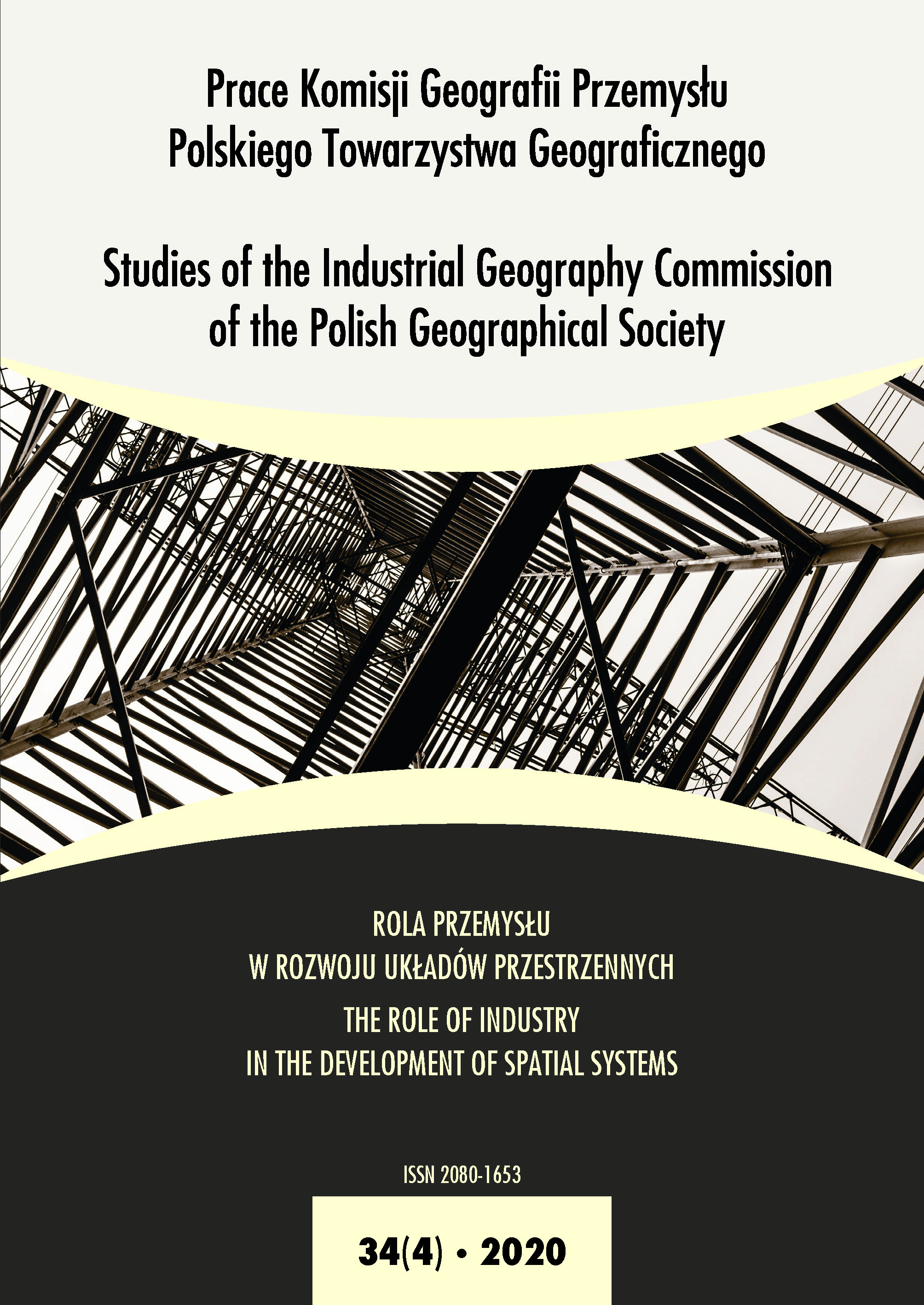Logistics infrastructure of the Eurasian Economic Union (EAEU) in providing transit from China to the European Union
DOI:
https://doi.org/10.24917/20801653.344.9Keywords:
China, EU, Eurasian Economic Union, integration, logistics infrastructureAbstract
Changes in the transport infrastructure in China, Asia and the Russian Federation go along with the main regional geo-economic trends of their development. The core of the suggested initiatives from China is the inclusion of Asian countries and Russia in the list of transit states in order to form alternative multimodal transport corridors in the direction «East-West» (China-EAEU-EU route). The present research deals with the problems of the development of logistics infrastructure in the Eurasian Economic Union (EAEU) with the purpose of further improvement of transit opportunities in the delivery of goods from China to the European Union. The authors of the article take into consideration that the EAEU logistics infrastructure is an established and evolvable system which is formed under the influence of globalisation processes and regionalisation of the world economy. The unified transport system of the EAEU countries formed during the Soviet period needs modernisation. Modern conditions of transportation routes in EAEU are observed on the basis of the specific examples as well as the transformation and modernisation options of a transport vector in the direction of China-EAEU-EU. The main trends in the infrastructure development in Central Asia are reflected in the regional projects of railway and automobile communications with the integrational priorities. The development of logistics infrastructure is essential for the full realisation of the transit potential inherent in the integration within the Eurasian region.
Downloads
Metrics
References
Agreement on economic and trade cooperation between the Eurasian Economic Union and its member States, of the one part, and the People’s Republic of China, of the other part. (2018). Retrieved from: http://www.eurasiancommission.org/ru/act/trade/dotp/sogl_torg/Documents/Interim%20Agreement%20EAEU-Iran_final.pdf (Accessed on: 2020, November 3).
Albert, M., Cederman, L.-E. (2010). System Theorizing in IR. In: M. Albert, L.-E. Cederman, A. Wendt (eds.), New Systems Theories of World Politics. Basingstoke, England; New York: Palgrave MacMillan, 3–22.
Ananyev, R. (2017, October 7). Perspektivy rosta [Growth Prospects]. Zheleznodorozhnik Belorussii [Belarusian Railway]. Retrieved from: http://xpress.by/2017/10/07/perspektivy-rosta-2/ [in Russian].
Arsenov, V.I. (2007). Prospects of integration of Russian transport into the system of Eurasian transport links. Transport Rossijskoj Federacii [Transport of the Russian Federation], 10, 4–7.
Bertalanfy, L. (1968). General System Theory. Foundations, Development, Applications. New York: George Braziller.
Beifert, A., Shcherbanin, Y., Vinokurov, E. (2018). Trans-Eurasian Land Transport Corridors: Assessment of Prospects and Barriers. Laxenburg, Austria: International Institute for Applied Systems Analysis.
Bogaturov, A.D. (2012). Modern international order. In: International process, 1, 66–89.
Bridges, E.M. (1990). Northern Asia. In: World Geomorphology. Cambridge: Cambridge University Press, 124–126.
Buzan, B., Little, R. (2000). International Systems in World History. Remaking the Study of International Relations. Oxford; New York: Oxford University Press.
Denisov, I.E., Luzyanin, S.G., Lukin, A.V. (2016). Chinese global project for Eurasia. Moscow: Scientific Expert [in Russian].
Dubrovskaya, V. (2019). New backbone of the Russian economy Expert, 8, 18–24.
Euroasian Development Bank. (2018). Silk Road Transport Corridors. Assessment of Trans-EAEU Freight Traffic Growth Potential. Saint Petersburg: Centre for Integration Studies, report 49. Retrieved from: https://eabr.org/upload/iblock/0a8/EDB-Centre_2018_Report-49_Transport-Corridors_ENG.pdf.
Hauskhofer, K., Ratcel, F. (2019). Teoriya “zhiznennogo prostranstva” [The theory of “living spaces]. Moscow: Algoritm [in Russian].
Kaplan, M. (2008). System and Process in International Politics. ECPR Press.
Keohane, R. (1989). International Institutions And State Power. Essays in International Relations Theory. Boulder, San Francisco; London: Westview Press.
Kofner, Yu.Yu. (2018). Common market of the EU-EAEU: prospects of convergence of technical regulation systems. Modern Eurasian Studies, 1, 7–14.
Larin, O.N. (2017). Prospects for the Integration of Transport Systems of the Eurasian Economic Union. Problemy nacional’noj strategii, 4, 152–170.
Luhmann, N. (2013). Introduction to Systems Theory. Cambridge: Polity Press.
Makkinder, H.J. (1995). Geograficheskaya os’ istorii. Polis. Politicheskie issledovaniya, 4, 162–169 [in Russian].
Manykin, A.S. (2009). Consistency in international relations: Content, causes of formation and stages of development. In: A.S. Manykin, N.A. Kosolapov, N.N. Naumova (eds.), Fundamentals of the General Theory of International Relations. Moscow: Moscow State University, 39–77.
Nye, J., Welch, D.A. (2012). Understanding Global Conflict and Cooperation. An Introduction to Theory and History. Boston, MA: Pearson.
Podberezkina, O.A. (2015). Transport Corridors in the Russian Integration Projects, the Case of the Eurasian Economic Union. MGIMO Review of International Relations, 1, 57–65.
Top, Yu. (2008). A single transport space of the EurAsEC. Loginfo, 9, 6–10.
Vinokurov, E., Dzhadraliev, M., Shcherbanin, Y. (2009). International transport corridors of EurAsEC. Faster, Cheaper, More. A Sectoral Overview, Almaty: Eurasian Development Bank, 2009 [in Russian].
Vinokurov, E.Yu., Lobyrev, V.G., Tikhomirov, A.A., Tsukarev, T.V. (2018). Transportnye koridory Shelkovogo puti. Aanaliz barerov i rekomendacii po napravleniju investicij [Transport corridors of the silk road. Analysis of barriers and recommendations for investment direction]. Petersburg: Euroasian Development Bank [in Russian].
Vision and Actions on Jointly Building Silk Road Economic Belt and 21st-Century Maritime Silk Road. (2015). Retrieved from: https://reconasia-production.s3.amazonaws.com/media/filer_public/e0/22/e0228017-7463-46fc-9094-0465a6f1ca23/vision_and_actions_on_jointly_building_silk_road_economic_belt_and_21st-century_maritime_silk_road.pdf
Waltz, K. (1979). Theory of International Politics. Reading, Mass.: Addison-Wesley.
Watson, A. (1992). The Evolution of International Society. A Comparative Historical Analysis. London; New York: Routledge.
Downloads
Published
How to Cite
Issue
Section
License
Articles are published under the terms of the Creative Commons License (CC BY-ND 4.0; Attribution– NoDerivs).

